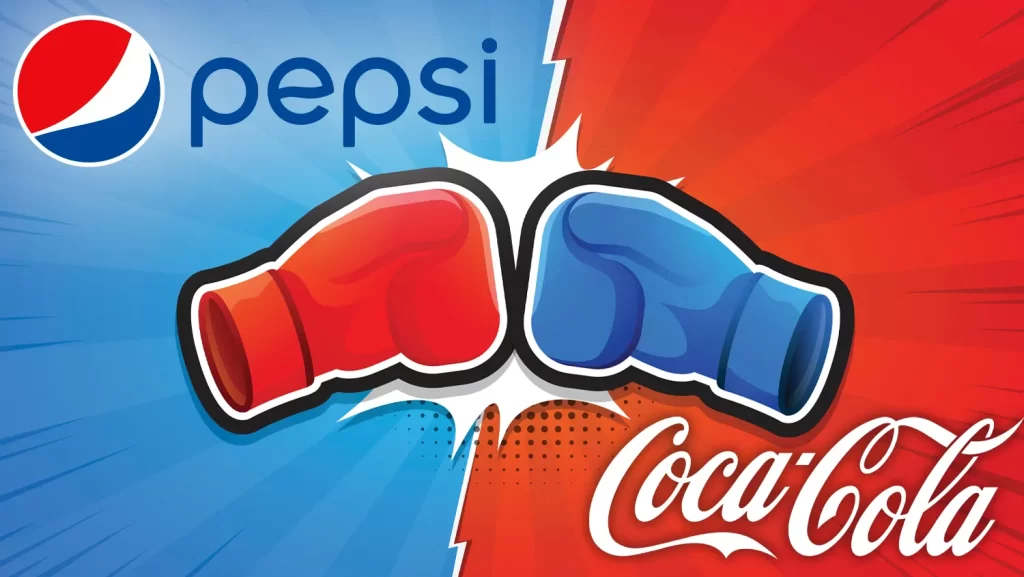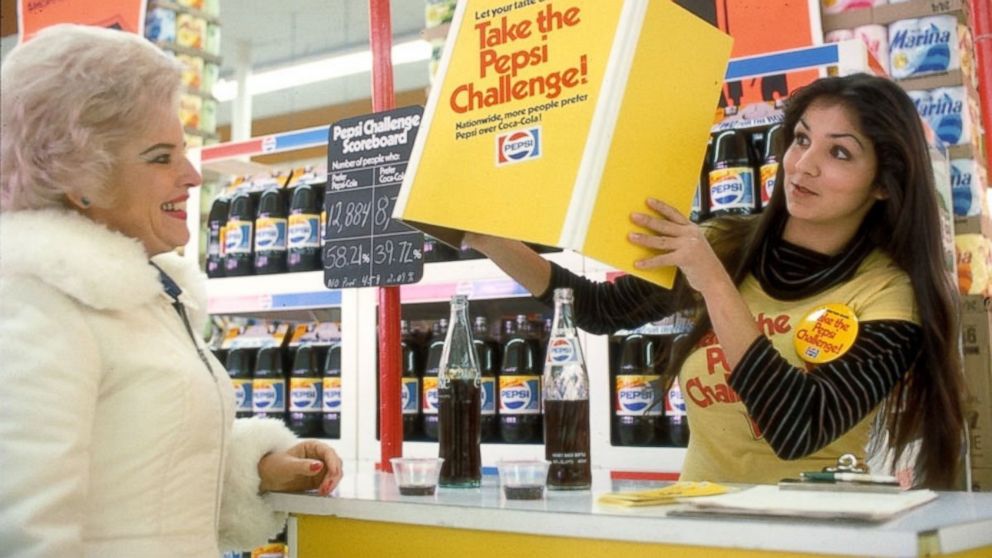Back in the mid-1970s, Pepsi shook the soda world with a bold move that would forever change the game – The Pepsi Challenge. Imagine being handed two cups of cola, one Pepsi, one Coke, without knowing which is which. This simple yet daring idea turned the cola wars on their head. People across the nation were surprised to discover their taste buds often preferred Pepsi. This wasn’t just about winning a taste test; it was about challenging the status quo and making consumers rethink their brand loyalties. The Pepsi Challenge was more than a marketing campaign; it was a cultural phenomenon that made choosing a cola an exciting and interactive experience. This genius strategy not only boosted Pepsi’s brand awareness but also proved the power of engaging consumers in a fun, memorable way.

Overview of the Campaign
Launched in the mid-1970s, The Pepsi Challenge was a groundbreaking marketing campaign that dared to take on the reigning cola champion, Coca-Cola, by directly comparing their products through blind taste tests. This audacious campaign invited consumers to taste two unmarked cups of cola and choose their preferred flavor, often revealing a surprising preference for Pepsi over Coke. The simplicity and directness of this challenge tapped into the public’s curiosity and competitive spirit, making it an instant hit.
The genius of The Pepsi Challenge lay in its experiential and interactive approach. By putting the power of choice directly in the hands of consumers, Pepsi effectively engaged its audience and created a buzz that resonated far beyond the taste tests. The campaign was not just about taste; it was a bold statement against brand loyalty and preconceived notions, encouraging people to trust their own preferences. The results were dramatic, significantly boosting Pepsi’s market share and brand perception. This campaign’s success showcased the power of innovative and consumer-focused marketing strategies, making The Pepsi Challenge a textbook example of how to effectively disrupt an industry and engage consumers in a meaningful way.
Campaign Execution of The Pepsi Challenge Brand Campaign
The Pepsi Challenge was masterfully executed to maximize consumer engagement and media coverage. PepsiCo employed a multifaceted approach, combining grassroots marketing with mass media advertising to ensure broad reach and impact. Here’s a closer look at how they did it:
Blind Taste Tests in Public Spaces:
Shopping Malls: One of the most famous execution sites was shopping malls, where Pepsi set up booths inviting shoppers to participate in the challenge. For example, at the Westfield Mall in Los Angeles, hundreds of shoppers were drawn to the Pepsi booth, creating an energetic and competitive atmosphere as they tasted and chose their preferred cola.
State Fairs: Pepsi also leveraged state fairs, which attract large, diverse crowds. At the Texas State Fair, Pepsi’s challenge booth became a major attraction, with lines of people eager to see if their taste buds would favor Pepsi over Coke.
Sporting Events: Major sporting events, such as baseball games, were prime locations for the challenge. Pepsi set up kiosks at Yankee Stadium, allowing fans to participate during game breaks, further boosting visibility and engagement.
Media Blitz:
Television Commercials: The campaign’s success was amplified through television commercials that aired during prime time. One notable ad featured regular people on the street in New York City taking the challenge, with many expressing surprise at choosing Pepsi. This commercial was strategically aired during popular shows to maximize reach.
Print Advertising: Print ads in major newspapers and magazines, such as The New York Times and Time, highlighted the challenge results, showcasing statistics and personal testimonials from participants who preferred Pepsi.
Retail Partnerships and Promotions:
Grocery Stores: In partnership with major grocery chains like Kroger and Safeway, Pepsi implemented in-store promotions. Special displays and free samples were provided to shoppers, along with promotional discounts for those who participated in the challenge.
Convenience Stores: At convenience store chains such as 7-Eleven, Pepsi ran limited-time offers where customers who took the challenge received discounts on Pepsi products, driving both participation and sales.
Public Relations and Word-of-Mouth:
Press Coverage: Pepsi’s PR team worked tirelessly to secure coverage in major news outlets. For example, The Wall Street Journal ran a feature story on the growing success of the Pepsi Challenge, including interviews with participants and marketing experts.
Talk Shows: Popular talk shows like The Tonight Show Starring Johnny Carson discussed the challenge, with some hosts even participating live on air, generating significant buzz and extending the campaign’s reach.
Social Proof and Data Utilization:
Follow-Up Campaigns: Pepsi continued to leverage data from the taste tests in follow-up advertising campaigns. For instance, they ran ads featuring maps showing regional preferences, highlighting areas where Pepsi was particularly favored.
Consumer Testimonials: Ads and social media posts included real testimonials from participants across different demographics, emphasizing the widespread preference for Pepsi.
By strategically deploying these elements, The Pepsi Challenge not only engaged millions of consumers but also created a lasting impact on brand perception and market dynamics. The campaign’s innovative execution set a benchmark for future interactive marketing strategies.
Analysis of the Campaign
The Pepsi Challenge remains one of the most iconic and analyzed marketing campaigns in history. Its innovative approach and significant impact on consumer behavior and market dynamics provide valuable insights into effective branding strategies. Here’s a holistic analysis of the campaign with real-life information, data, and examples:
Consumer Engagement and Experience:
Interactive Approach: By inviting consumers to participate in blind taste tests, Pepsi transformed a simple product comparison into an engaging and interactive experience. This hands-on approach made consumers active participants in the brand narrative, fostering a deeper connection with Pepsi.
Surprise Element: The element of surprise – discovering a preference for Pepsi over Coke – created a memorable experience that resonated with consumers. Surveys conducted during the campaign revealed that a significant percentage of participants who initially preferred Coke chose Pepsi in blind taste tests, demonstrating the effectiveness of this approach.
Market Impact and Brand Perception:
Market Share Growth: The campaign significantly boosted Pepsi’s market share. In the late 1970s, Pepsi’s market share rose from 6% to 14% in areas where the challenge was heavily promoted. This growth indicated that the campaign successfully converted many Coca-Cola drinkers.
Brand Image: The Pepsi Challenge positioned Pepsi as a bold and innovative brand willing to take risks. This adventurous image appealed particularly to younger consumers. For example, a study by the Harvard Business Review highlighted that Pepsi’s brand perception among young adults improved by 20% during the campaign period.
Competitive Strategy:
Direct Confrontation: The campaign’s direct confrontation with Coca-Cola was a risky yet strategic move. By openly challenging Coke, Pepsi not only gained visibility but also positioned itself as a formidable competitor. This competitive stance resonated with consumers who appreciated the brand’s confidence and transparency. Historical market data showed that in several regions, Coca-Cola’s dominance was notably challenged, leading to increased competition in promotional activities from Coke.
Data-Driven Insights: The campaign relied heavily on data from the taste tests, which provided concrete evidence to support Pepsi’s claims. For example, in a series of tests conducted in Dallas, Texas, over 50% of participants preferred Pepsi, providing compelling data to support Pepsi’s advertising claims.
Legacy and Lessons learned from The Pepsi Challenge brand campaign
Innovative Marketing: The Pepsi Challenge set a new benchmark for innovative and experiential marketing. It demonstrated the power of direct consumer engagement and the importance of creating memorable brand experiences. The campaign’s influence is seen in many modern marketing strategies that emphasize consumer interaction and experiential branding.
Risk and Reward: The campaign showed that taking bold risks could yield substantial rewards. Pepsi’s willingness to directly challenge Coca-Cola and put its product to the test was a gamble that paid off, significantly enhancing its market position and brand perception. Pepsi’s market share gains and improved brand image served as a case study for business schools.
Consumer-Centric Strategies: The campaign underscored the effectiveness of consumer-centric strategies. By focusing on consumer preferences and experiences, Pepsi was able to build a stronger, more relatable brand. The use of blind taste tests has since become a widely adopted method for product testing and marketing.
In conclusion, The Pepsi Challenge was a masterclass in strategic marketing. Its innovative execution, bold competitive stance, and deep consumer engagement not only disrupted the beverage industry but also provided enduring lessons for marketers across various sectors. The campaign’s success is a testament to the power of interactive and data-driven marketing strategies in building strong, consumer-focused brands.
Also Read: A Case Study of Doritos Locos Tacos Campaign: Taco Bell & Doritos Co-branding
To read more content like this, subscribe to our newsletter
Go to the full page to view and submit the form.



